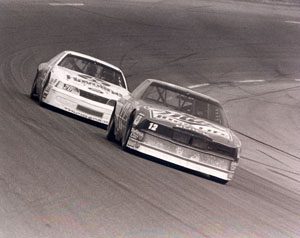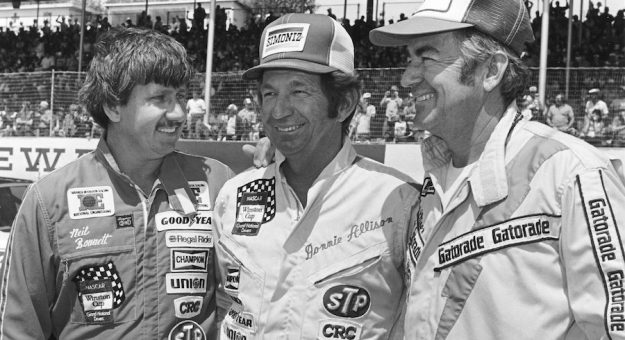Bobby Allison started the 1988 NASCAR Cup Series season in championship form, just as he did when he claimed his lone title in 1983.
In February 1988, Allison won his third Daytona 500 over son Davey. It was a Cinderella finish, one of the greatest in Daytona 500 history. Three top-five finishes and six top-efforts made for a great start to Bobby Allison’s season.
Then came Sunday, June 19, at Pennsylvania’s Pocono Raceway. As the green flag waved to the start the 200-lap event, Allison rolled off 28th in the No. 12 Stavola Brothers Buick.
Radio silence was interrupted when Allison voiced a problem to his crew.

“I’ve got a tire going down. I’m coming back to you,” he said.
Heading toward the second turn, Allison spun and went into the outside wall before being rammed in the driver’s side door by the car driven by Jocko Maggiacomo. In the blink of an eye, Allison’s driving career ended as his mangled race car slid to a stop.
Allison was initially listed in critical but stable condition with a severely broken left leg, broken ribs, a concussion, a bruised heart and closed-head trauma.
Dr. Harry Stevens, a neurosurgeon at Lehigh Valley Medical Center in Allentown, Pa., was about to leave on vacation when Allison was brought into the hospital. Stevens performed emergency surgery to relieve cranial pressure that was building to very dangerous levels.
“Simply put, I should have died in the crash,” Allison said. “But God has a different plan for me. When they finally got me out of the race car and got me to the hospital, I was in a hallway for a time, a doctor walked by and said, ‘Why is this man here? He’s dead.’ But I wasn’t dead. I was as close to dead as someone could be without actually being dead.”
Allison’s body was badly bruised and broken. He was unconscious for four days. Improvement was slow and calculated, as days, weeks and months of hospital stays and rehabilitation began his new way of life. Rehabilitation became a miracle in itself, considering how badly Allison had been injured. Rebuilding his life, both physically and mentally, continued for decades.
Other serious complications were potentially worrisome and presented challenges of their own aside from his crash injuries once he was able to leave the ICU. His wife, Judy; sons Davey and Clifford; and daughters Carrie and Bonnie, as well as many other family members and friends, knew his incredible will to survive is what kept him alive.
Allison began racing as a teenager on the short tracks of south Florida. He eventually relocated to Hueytown, Ala., and became a two-time national modified champion in 1964 and ’65. He won virtually everywhere he raced, as did younger brother Donnie Allison and Red Farmer, the third member of what became known as “The Alabama Gang.”
When Bobby Allison first began winning in the Cup Series with his own Chevelle in 1966, his success caught the attention of the top team owners.
Holman Moody, Richard Howard (with Junior Johnson), Roger Penske, Bud Moore, Harry Ranier and DiGard Racing all came calling. Throughout his career, there were years of great successes and those where few wins came. He is credited with 84 Cup Series victories, with six coming in his own cars.
“I do feel I had a rewarding career,” Allison said. “I drove for 14 different Cup Series team owners and had some incredible winning seasons and still got fired at the end of the year. I won 10 races with Junior Johnson (and Richard Howard) in 1972, but we didn’t stay together. Had we been able to stay together, I believe we could have won several championships together. We could win on the race track but just couldn’t communicate properly off the track.
“I just couldn’t verbalize what Junior needed to hear. We just couldn’t talk or connect on anything. In the end, we finished second to Richard Petty for the championship that year. He got Cale Yarborough in 1973 and they stayed together for many years (through 1980).
“Several times during my career, I went back to driving my own cars because I felt that was the best way to go,” Allison added. “Winning races was important to me, as it was for everyone I drove for. I wanted the best possible outcome every time I got into a race car. With some teams and team owners, getting there was an incredible struggle. With others, everything clicked very well.”
